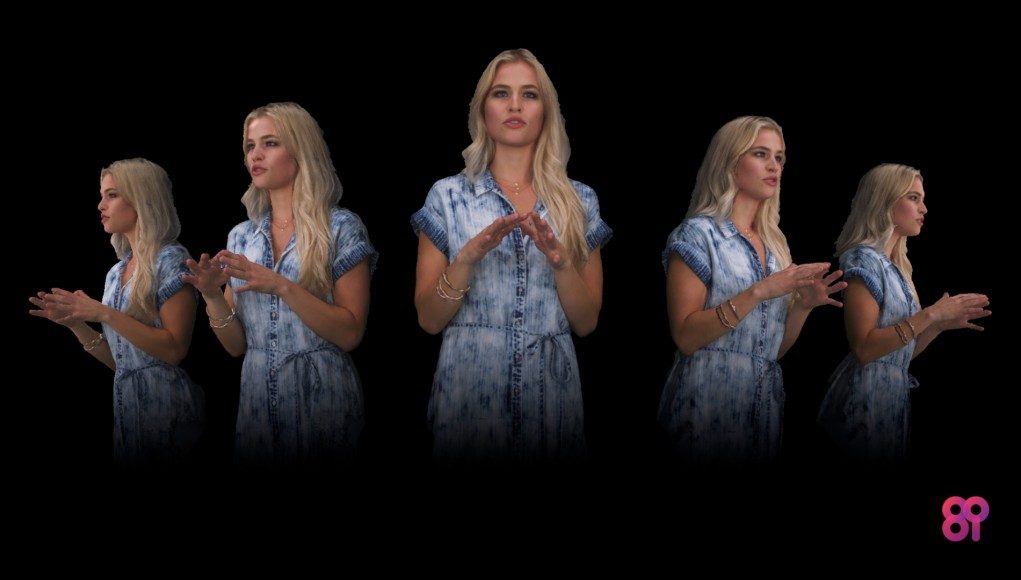 Sunny Dhillon is a principal and co-founder of Signia Venture Partners as well as a lifelong gamer. Signia has been an investor in mobile games, and so he knows what to look for in terms of a solid team and distinct art style that resonates with gamers. Signia was one of the 16 investors who invested $13.5M into 8i, a 3D volumetric capture startup, and Sunny says that he’s looking for other content creation tools to invest in.
Sunny Dhillon is a principal and co-founder of Signia Venture Partners as well as a lifelong gamer. Signia has been an investor in mobile games, and so he knows what to look for in terms of a solid team and distinct art style that resonates with gamers. Signia was one of the 16 investors who invested $13.5M into 8i, a 3D volumetric capture startup, and Sunny says that he’s looking for other content creation tools to invest in.
LISTEN TO THE VOICES OF VR PODCAST
The first VR investment that Sunny has made is 8i, which made up of a solid team of digital effects artists from Industrial Light & Magic, WETA Digital and Digital Domain. 8i is working on digital lightfield capture tools using commercial off-the-shelf cameras. They’re aim is to bring more humanity into VR by creating user generation tools for people to put be able to put themselves into immersive VR experiences.
Sunny reflects many of the sentiments of Google Venture’s Joe Kraus in that he sees that 2016 is going to be a year of survival for the early movers within the virtual reality gaming space. He sees that the business models of advertising are still evolving the overall market is far from being completely sustainable. So Sunny is cautiously optimistic and he’s taking a slow and measured approach in that he doesn’t intend on investing into too much VR content in 2016. He first wants to see more market penetration and adoption with this first round of consumer virtual reality HMDs.
Signia Venture Partners has made investments into mobile gaming companies including Artillery Games and Super Evil Megacorp, who developed Vainglory. When he’s evaluating potential gaming companies to invest in, Sunny said that he’s looking for a solid team with a proven track record of creating quality games that have been successful on other platforms.
Sunny’s personal experiences in VR has told him that having higher fidelity of photorealistic experiences have increased his level of immersion, and that’s part of the reason why he’s so excited to invest into a company like 8i. At one point, Sunny told me, “I’ve focused a couple of times here on the photorealism because I think that that’s necessary for immersion.”
I had to disagree with this specific point because of how the presence research that Mel Slater has done indicates that photorealism only accounts for the place illusion, which is only half of the equation for creating presence with the other half being the plausibility illusion.
I think that one of the most important podcasts I’ve done so far is with the presence researcher Richard Skarbez who has been following on Mel Slater’s work on these two components of presence. Richard told me that he sees the uncanny valley as being n-dimensional meaning that the higher fidelity of visuals that you have, then you will need to have higher fidelity on all of the other dimensions of your experience in order to match what our expectations our bodies have with photorealistic visuals.
I’ve personally observed that the experiences that actually dial down the visual fidelity and instead put more focus on creating a coherent and plausible world can actually create a more immersive experience than a photorealistic one where I feel like a ghost with no agency. I’m a big advocate for saying that the plausibility illusion is the other half of the presence equation, and that it’s a mistake to focus on visual fidelity while ignoring creating a dynamic, interactive, coherent and believable virtual world.
The best example of a VR experience that created both a sense of place and sense of plausibility was Oculus’ Toybox Demo. For those developers who have experienced it, it’s consistently one of the peak levels of immersion and presence in a VR experience. There was also a level of social and emotional presence, but I very much noticed how the visual fidelity of Toybox was very stylized and non-photorealistic. It’d be an interesting research question to compare and contrast the levels of immersion and presence in a Toybox Demo that was both photorealistic, and more stylized like what was shown at Oculus Connect 2.
That all said, the issue of how high of visual fidelity that people prefer could very well be a personal preference. And we will need companies like 8i and investors like Sunny to continue to create the technology that might be able to overcome this uncanny valley. It’s a debate that I’ve had with other photogrammetry companies like xxArray’s Alexx Henry, and ultimately the market will decide what types of VR experiences resonate the most with users and what the components are that maximize the level of presence that we’re able to achieve within VR.
Become a Patron! Support The Voices of VR Podcast Patreon
Theme music: “Fatality” by Tigoolio







